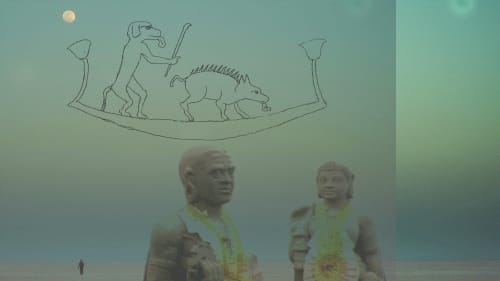The lola-jhiva (लोलजिह्व) figuration of the tongue lolling out of the mouth—in reckless audacity or doubt, or a combination of the two—has been haunting our thoughts, our work, our dreams and our drawings of late. It hovers, incarnates, asks questions, offers answers, fades, and then returns. The loosened tongue is an ambiguous, ambivalent sign, embodying both an action and a reflex in the wake of an action—or, if you like, practice and theory.
The unfurled tongue can be read as both an involuntary gesture and a coded sign. Its contradictory loosening seems to offer up an insatiable desire to lick away and taste every residue of reality, to slake every thirst, even as it also admits to a reluctance or regret at such a frank expression of unbridled appetite.
The tongue is the organ of taste (a discerner of multiple perceptions from temperature to flavor to texture to danger) as well as an instrument of expression. It is a reader as well as an author of experience and sensation.
A tongue gives rise to language (a tongue set free), but also accords afterthought in the wake of language, or reproach at the occasion of free-flowing, unrestrained communication (a biting of the tongue).
The tongue superposes within itself the roles of an observer, a subject, an actor, an agent, or a transmitter who expresses an understanding or an affect, as well as the roles of the observed, the object, the acted upon, the receiver. It all depends on who’s looking, when, and why.


